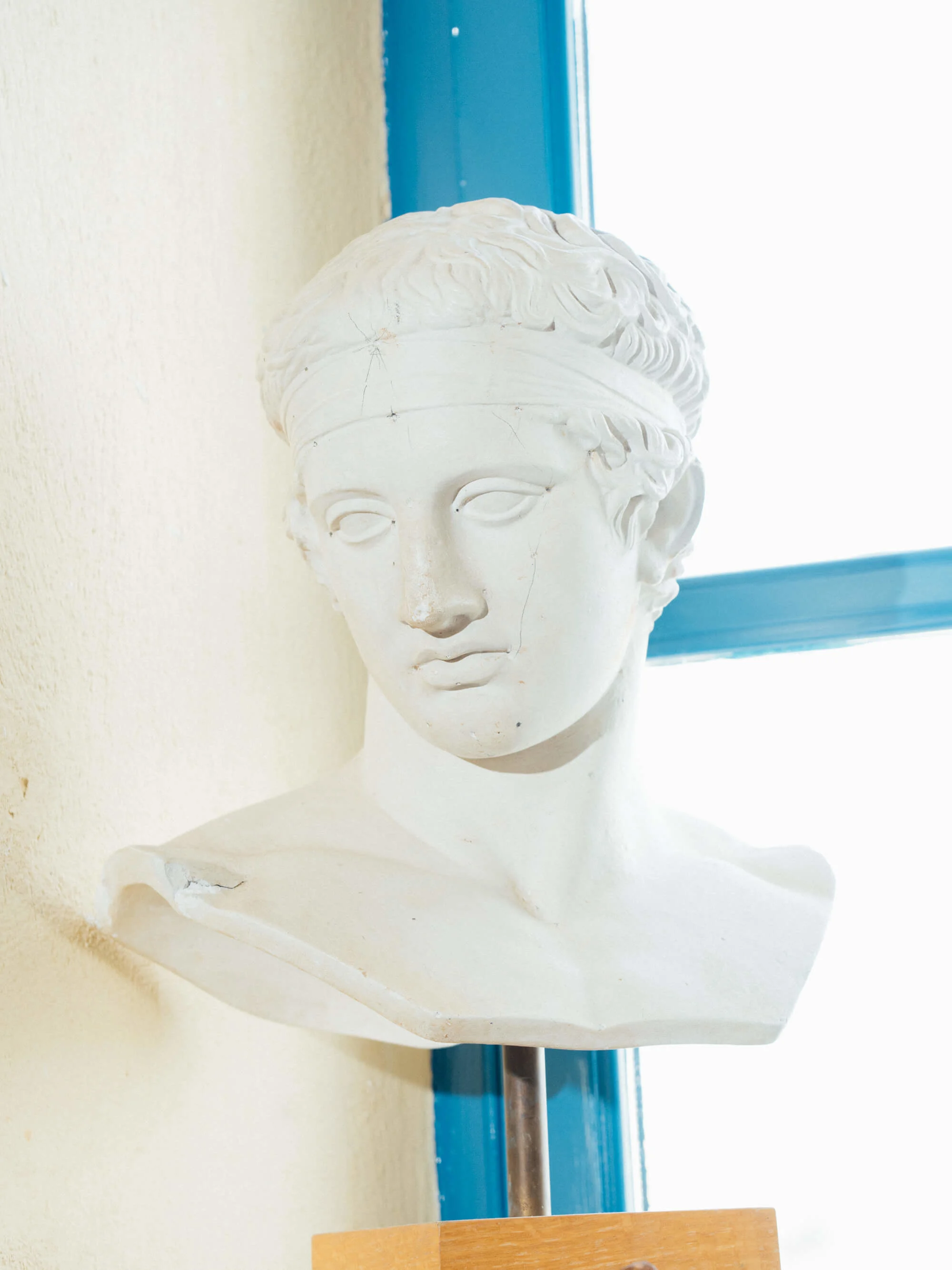
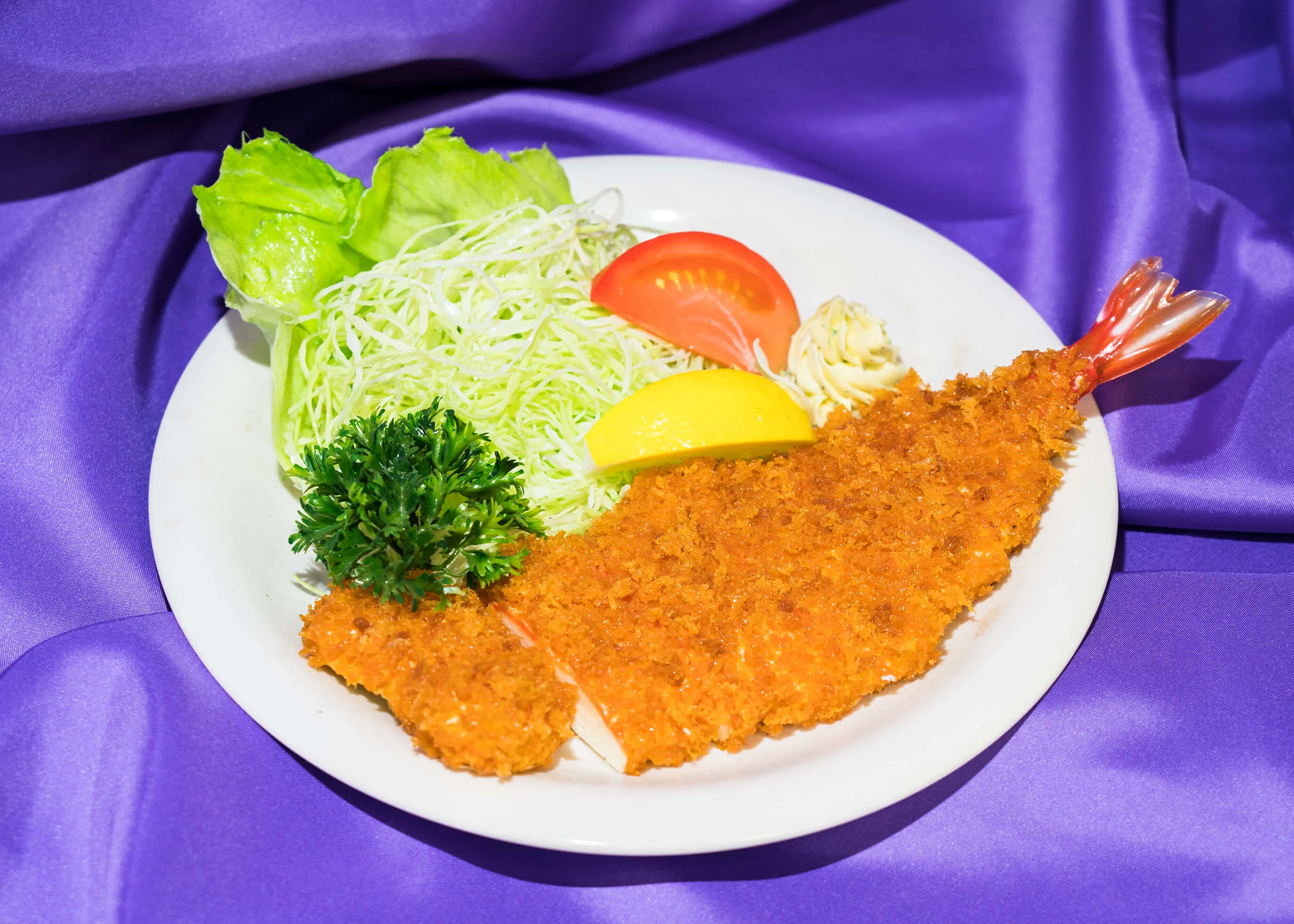
Gujo Hachiman is a small town in Japan, roughly half-way between Tokyo and Kyoto. It has pretty rivers and a popular summer dance festival. But Gujo Hachiman is most famous as one of the world’s finest producers of plastic food – hyperreal samples that grace restaurant windows across Japan.
Photographer Marco Arguello and writer Katherine Whatley went to Gujo Hachiman to capture the craftsmanship, heritage and humor behind this curious export.
Outside of Japan, plastic food is bright, crude and cute. It’s for children. In Japan though, fake food is a whole other story. Peer through any restaurant window and you’ll see a display of painstakingly-crafted plastic food, known as shokuhin sampuru. They certainly seem kitsch, but they’ve been part of Japanese food culture for nearly 90 years.


When Greek photographer Marco Arguello first came across sampuru in 2016, he was unimpressed. “I thought it was a sign the restaurant was poor quality because anywhere else in the world it would be out of place,” he says.
But after going down an internet rabbit hole, he realized he was wrong. What he’d assumed were mass produced by machines, were actually “created by dedicated artisans who spent years learning the craft of hand-making plastic food.”
So he went back to Japan in 2018, and his new series documents both the artisans who create these pieces and the absurdist aesthetics of the sampuru. “Japan has a long history of beautiful craftsmanship – things like paper, origami, denim, calligraphy and ceramics. I thought this would be a great project because it’s so different from the things that immediately come to mind when thinking of Japanese craftsmanship.”



Using flash, Marco makes bright, colorful, sometimes oversaturated images – perfect for the shiny surfaces and the visual trickery involved in the sampuru. He takes us inside the grungy factory, with its vinyl sofas and faded portraits of old men who once oversaw production. This aesthetic is contrasted with shiny images of the fake food, shot on swaths of bright-colored fabric.
Nothing about this story was as Marco expected. The nearest city to Gujo Hachiman is Nagoya, an industrial powerhouse dominated by Toyota. He thought Hachiman (as the locals call it) would be pretty characterless too. “I was pleasantly surprised to find a town that was nestled between the mountains and oozing with charm.”
The town sits in a valley where two rivers meet. This encouraged strong local handicraft production, and Hachiman became known for paper, knives and indigo dyeing. In the 1930s, locals turned their skills to a new product – the shokuhin sampuru, or food sample.
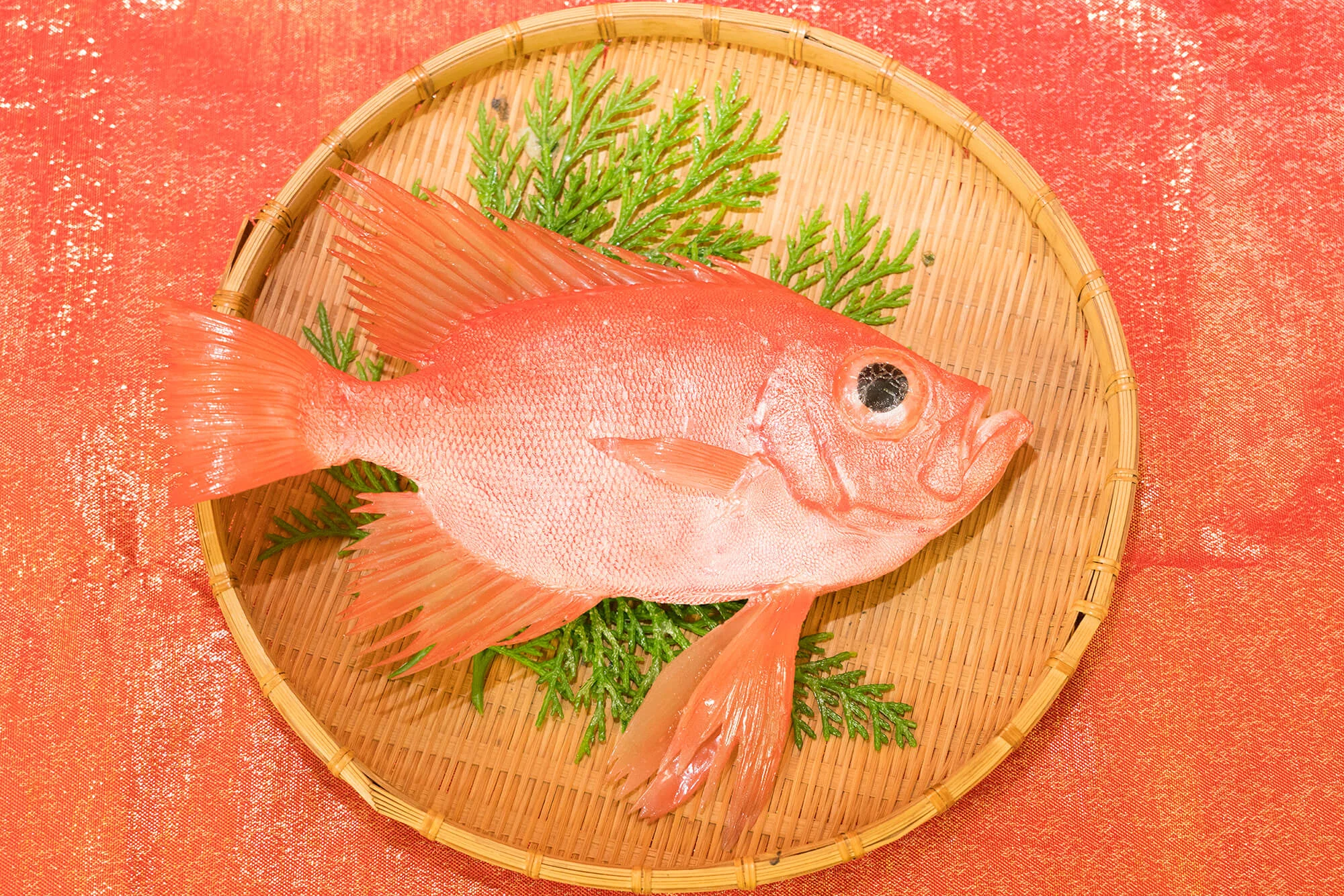
Fish is the most difficult, and only those with at least ten years of experience can make it.
Hachiman native and the father of fake food, Takizo Iwasaki, first got the idea after seeing how hot wax dropped into water created a flower pattern. “Then he looked at a badly made wax-sample of an apple, used for science classes, and realized he could perfect the technology and sell samples to restaurants,” says Seigo Kozakai, the head of Hachiman’s major plastic food manufacturer, Iwasaki Mokei.
In 1932, Takizo came up with his first design, an omelet and rice model made of wax. His timing couldn’t have been better. Restaurants were gaining popularity in Japan, as was yoshoku, so-called western food, which was really an imperfect copy, a Japanese interpretation.
Dishes like omelet stuffed with ketchup-flavored rice, hamburger steak and deep-fried shrimp and pork were new, exciting and unknown. Takizo’s samples would show consumers what this new food looked like, so they would want to try it.
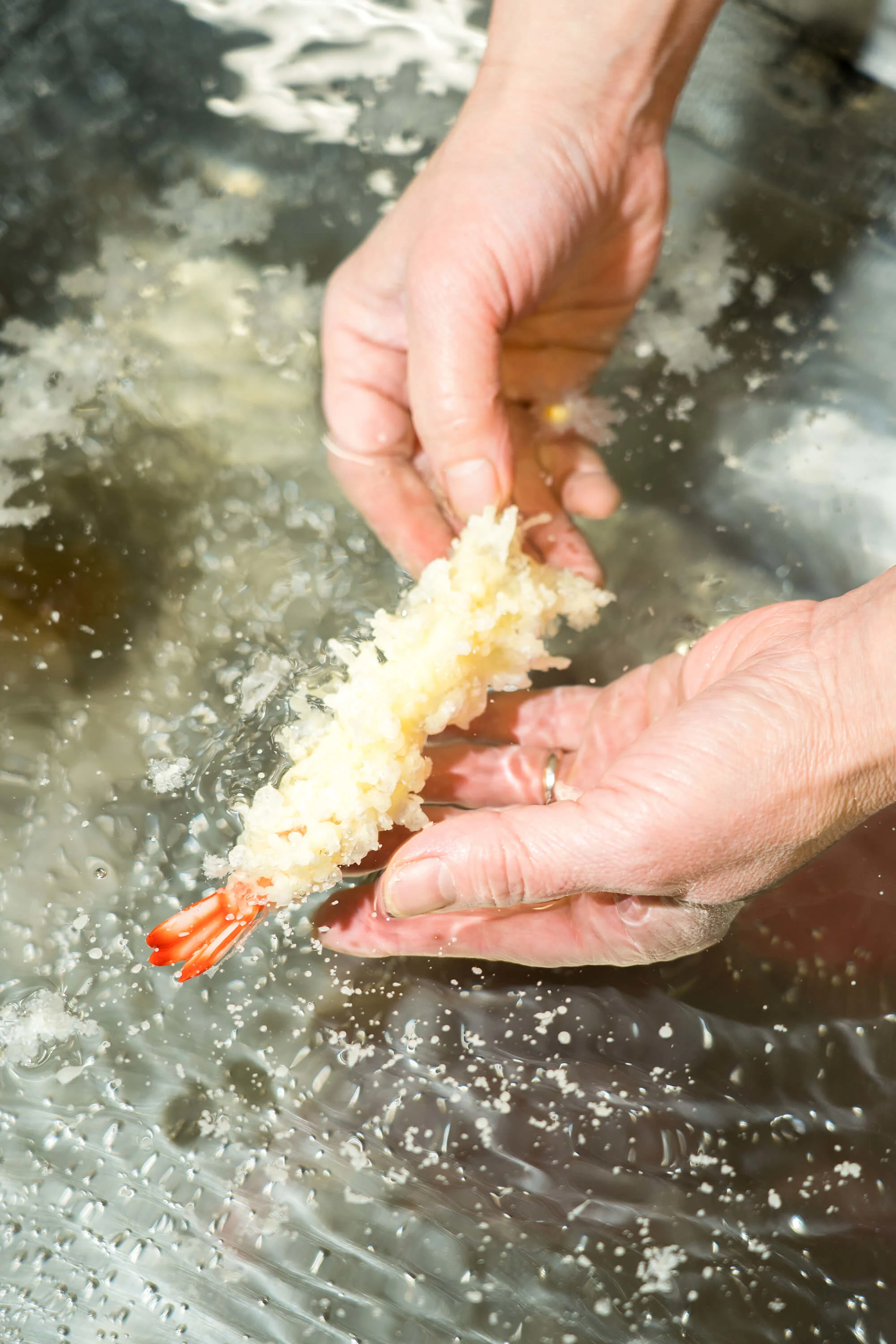

So with a box filled with samples on his back, Takizo peddled his wares from store to store. He offered a no-risk trial, so confident was he that his plastic food would help restaurants bring in new business. Though he’s rarely recognized for it, Takizo and his fake food samples helped revolutionize the eating habits of the Japanese.
From the 1970s, the workshops switched from wax to plastic, “because of all of its infinite possibilities, and because it doesn’t melt in the sun,” Seigo says.
Now they could provide everything from bright red crabs to creamy noodles and fluffy desserts. Yoshoku remains a mainstay of the industry and workers create hundreds of technicolor fried shrimp, juicy pork and bowls of bright red spaghetti every month.
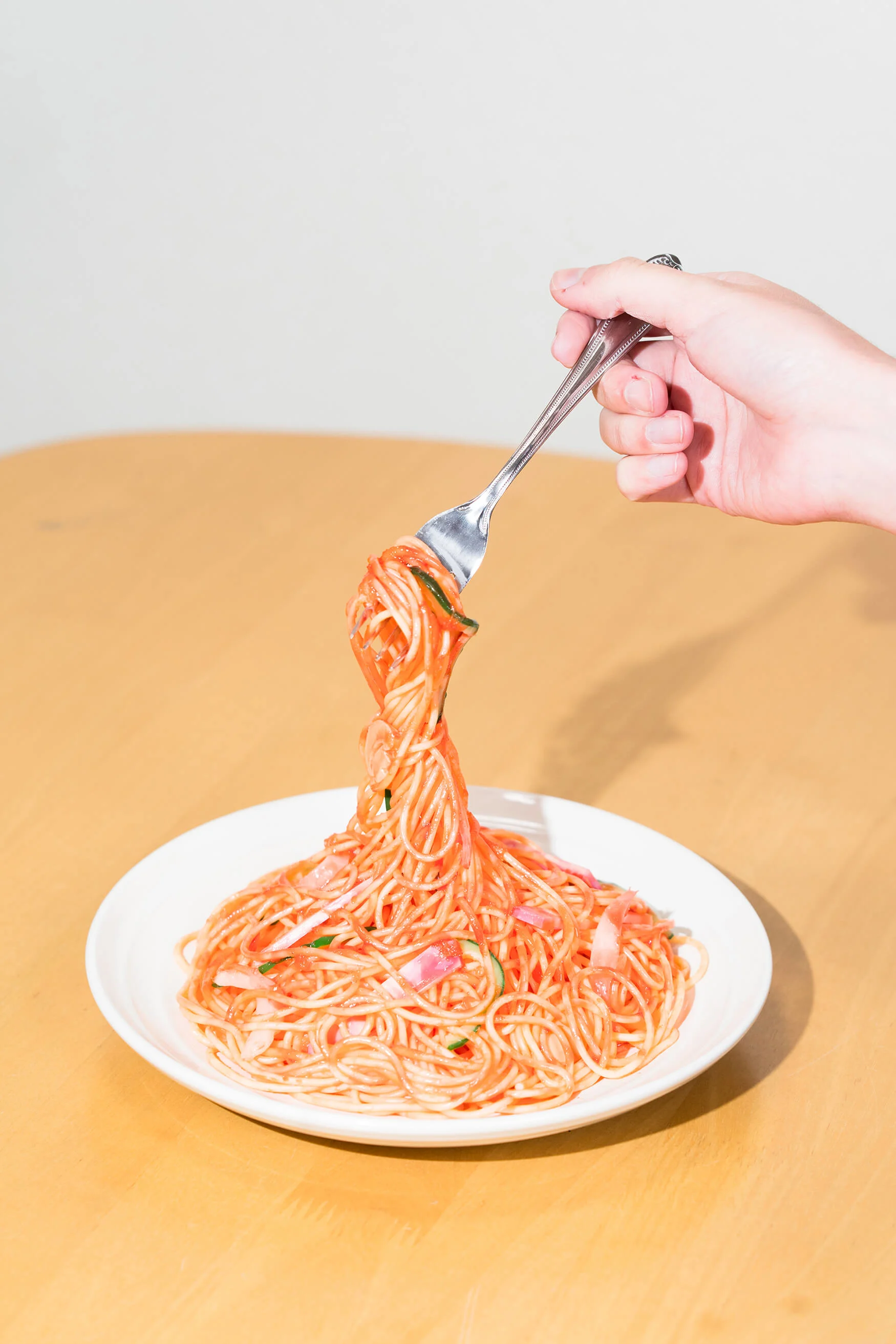

Sampuru are about senses. If you don’t have a good understanding of food, it’s hard to make.
Iwasaki Mokei has two factories, both on the outskirts of Hachiman. All the workers are born and bred locals, many of whom have spent their lives making plastic food. The process for making the sampuru has changed little in decades, and most of the work is still done by hand.
First, they create a silicone mold, then pour in liquid plastic which is left to set. This creates the main body of the sampuru, then the workers clean up the shape and start painting. Finally they apply a fixative which protects the paint and adds an extra shine. This process can take anywhere between a few hours and a few weeks.
Each food sample has a different level of difficulty, and so some items are reserved for the more senior, skilled staff. “How many years you have been making plastic food determines what kinds of food you are able to make,” Marco says. “Fish is the most difficult, and only those with at least ten years of experience can make it.”

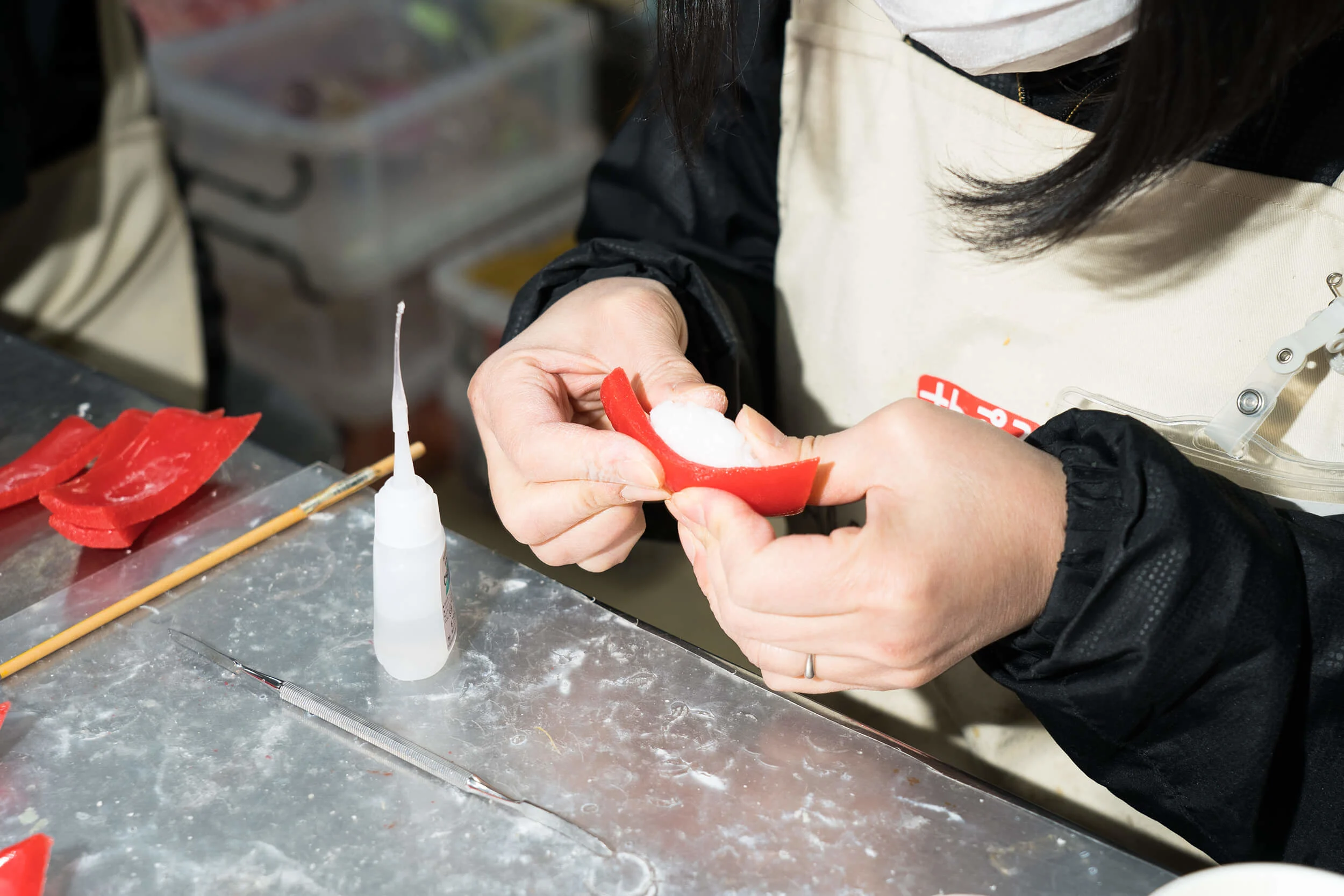
Mr Inoue is one of the longest-serving craftsmen at the factory. He’s worked there since he was 16, and though now technically retired, he still works part-time. As you might have guessed, Mr Inoue makes a lot of fish.
He says making sampuru is all about appreciating and enjoying the source material.
“Sampuru are about senses,” he says. “So if you don’t like food, if you don’t have a good understanding of food, it’s hard to make a sampuru that approximates the original closely.
“You also must have a sense of humor, otherwise you won’t have inspiration and won’t be able to make something fascinating and funny.” Making the customer smile, he believes, is key to convincing them to go into the restaurant.
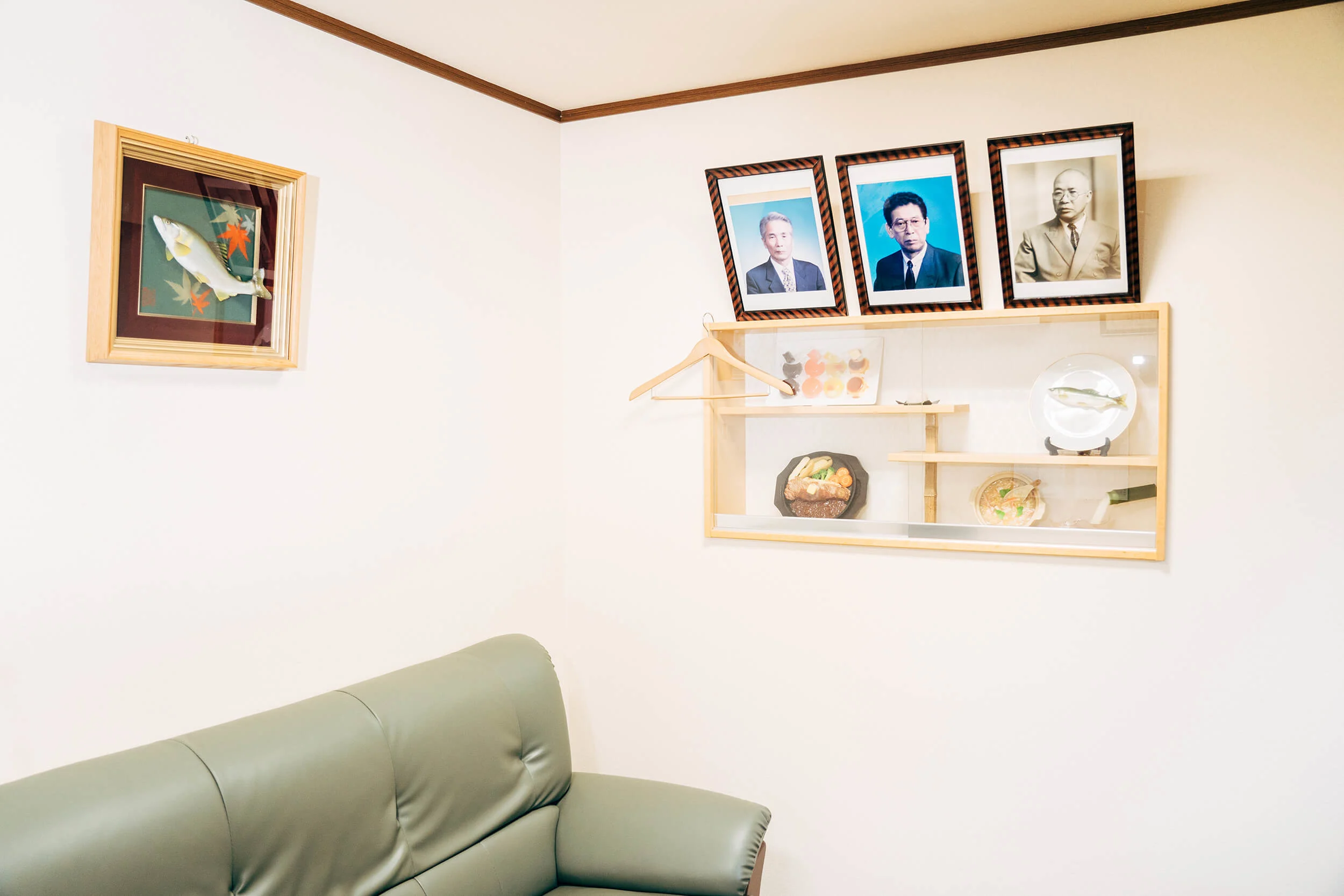
Marco’s take on the sampuru is also all about humor. “I wanted this series to be fun and a little bit absurd, because most stories about Japanese craft are so beautiful. I wanted people to ask themselves, wait, is that real?” he says.
“I loved the idea of contrasting something so organic with a manufacturing context –spaghetti in an oven, radioactive noodles on a tray, hand-molded nori seaweed in a sort of Petri dish."


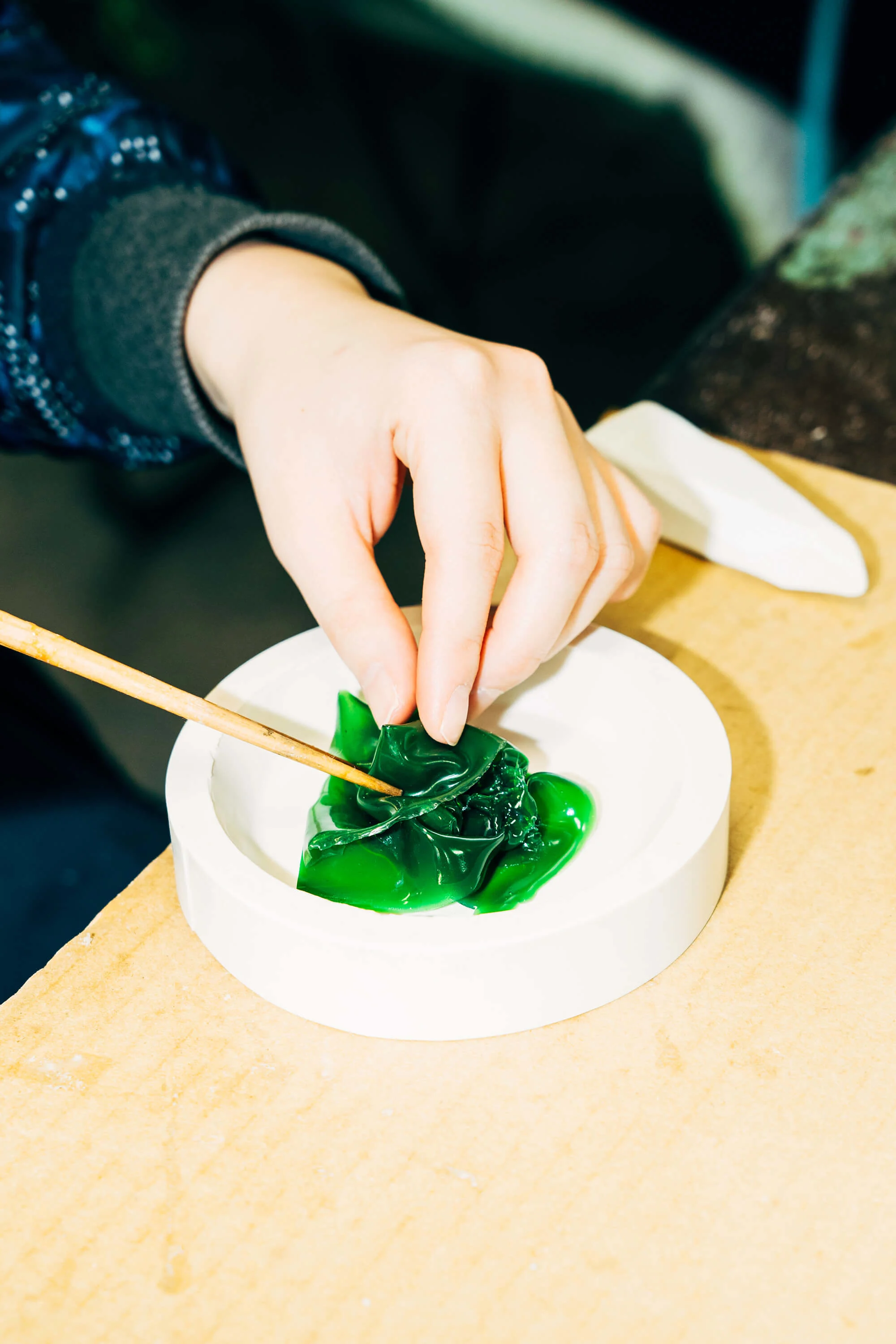
But this project wasn’t just about the samples themselves, it was about the whole culture that surrounds it. “Though the fake food is obviously the star, I wanted to tie everything together by showing the artisans at work, banal office details, as well as the tourism aspect of the industry.”
Behind Marco’s images is a story about a small town trying to deal with what its future will look like. Hachiman’s population is getting older; people and jobs are moving to the cities.

Katsuji Kaneyama, who owns the other sampuru-contender in town, Sample Kobo, thinks plastic-food tourism is part of the answer. Katsuji’s store is focused on tourists; his shop hosts workshops and sells keychains and other items. “My shop is in the center of town, in a 150-year-old nagaya house with as many original details as possible. I want people to visit Hachiman and learn about our town and the sampuru craft.”
“Because we have the Iwasaki Mokei factory, and Hachiman is the birthplace of Iwasaki Takizo, sampuru has roots here. Roots are very important for tourism, because people want real and authentic experiences.”



